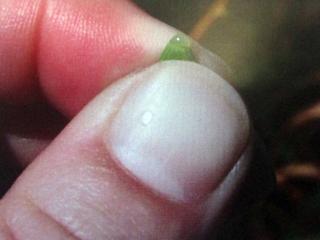The Department of Agriculture and Food expects an earlier harvest of WA oat crops this year following early seeding throughout much of the grainbelt.
Department research officer Raj Malik said growers would need to prepare for an earlier start this season to cut oaten hay to maximise production and quality.
“Cutting time is the key to achieving the best yields and quality of hay and consequently the best returns from export markets,” said Dr Malik.
“Hay export is very much a niche market, driven by high quality and consistent supply. Clean, green hay made from thin straw with low fibre and moisture content, and high levels of protein, water soluble carbohydrates and higher metabolisable energy is preferred and achieves the best price.”
DAFWA’s research has shown that the best time to cut hay is when plants are at the watery ripe (Z71) stage.
Dr Malik said cutting hay at the watery ripe stage provided the best compromise between yield and quality.
“While cutting hay earlier does result in better quality, it reduces yield,” he said.” Cutting hay after the watery ripe stage may increase hay yield, but can result in poor quality hay with poor colour, low water soluble carbohydrates, low crude protein and higher fibre.”
“Some varieties lose quality quicker if cutting is delayed. For example, the stems of Wintaroo can change from green to an unattractive brown white if cutting is delayed past watery ripe.”
Department oats research officer Georgie Troup said it was easy to determine the watery ripe stage by simply squeezing the top floret on the main stem to release a greenish watery fluid resembling kiwi-fruit juice.
“Growers need to repeat the procedure at several places in the paddock, and if more than half a paddock is at this stage, it’s the perfect time to cut the hay,” she said.
“There is a window of opportunity of 5-7 days if cutting is slightly delayed from watery ripe stage. This may accommodate unexpected events such as rain and/or contracting machinery.”
Advice from Trent Butcher at Consult Ag was to delay cutting if more than 10mm of rain was forecast.
“In this situation, it often pays to delay the cutting otherwise hay will take longer to dry and potentially develop mould due to lack of air circulation,” Mr Butcher said.
“If wet weather is forecast for prolonged periods, using a Super conditioner for faster drying of the hay should be considered.”

Media contacts: Jodie Thomson/Lisa Bertram media liaison +61 (0)8 9368 3937
